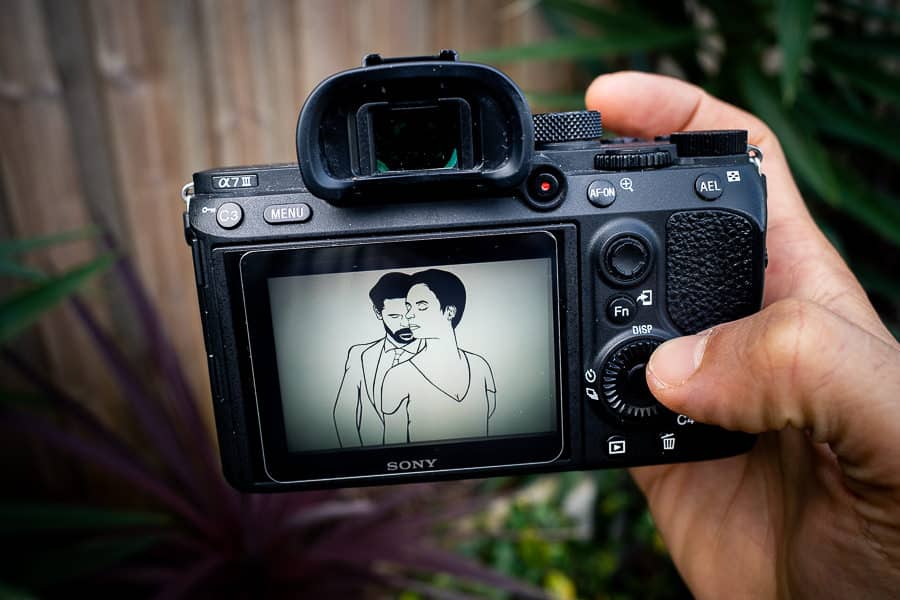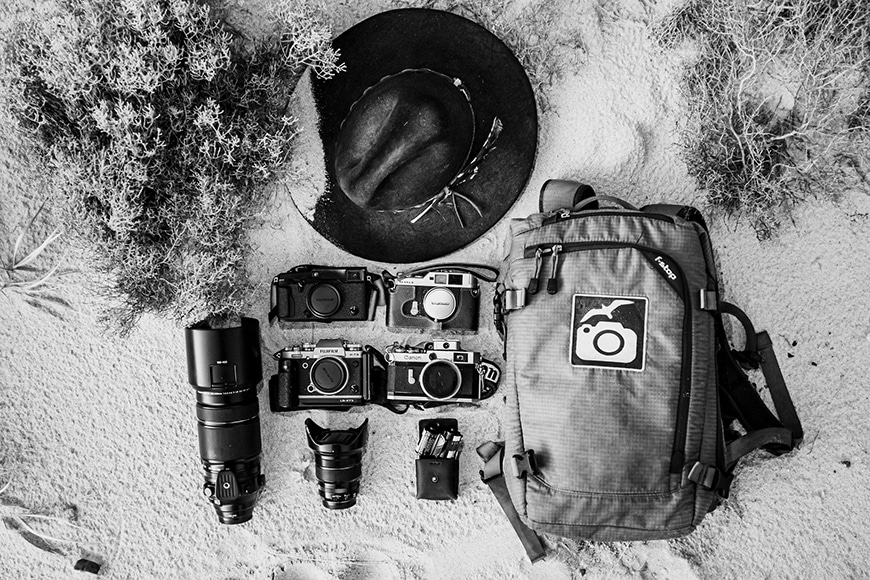
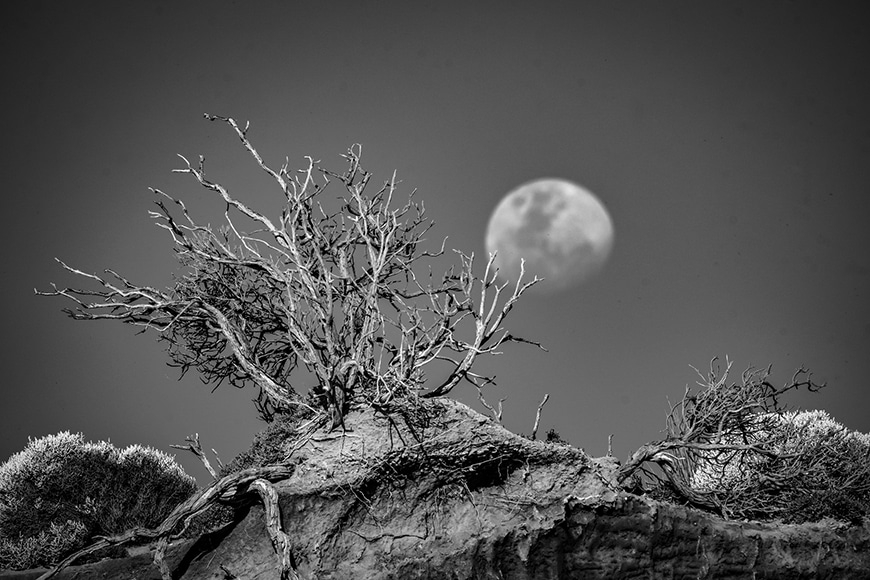
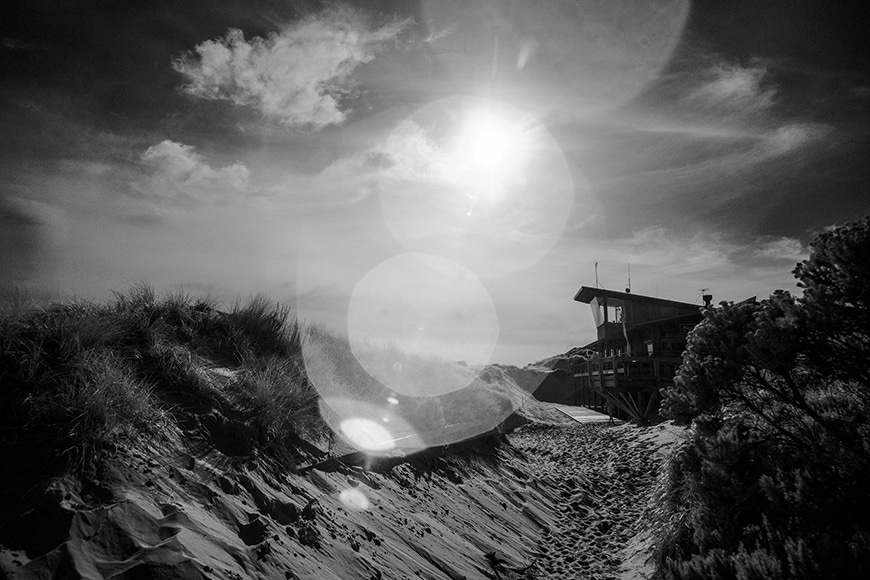
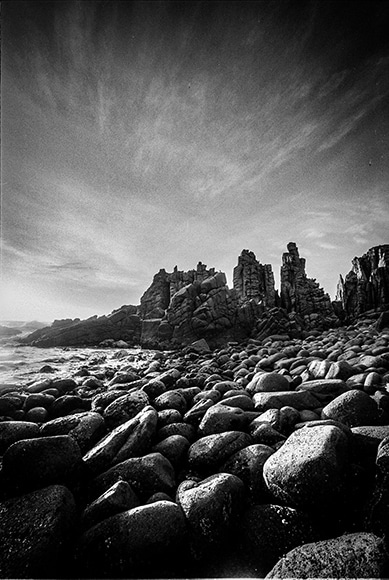
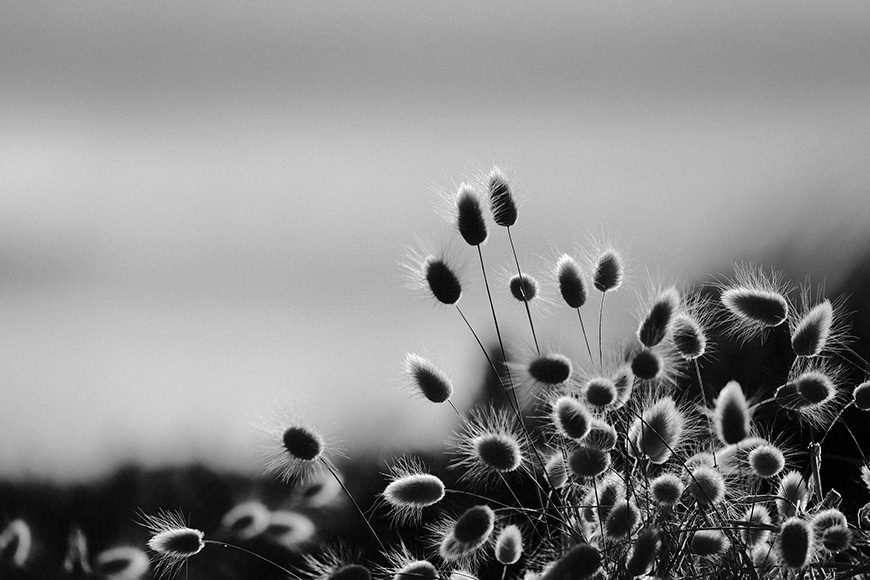
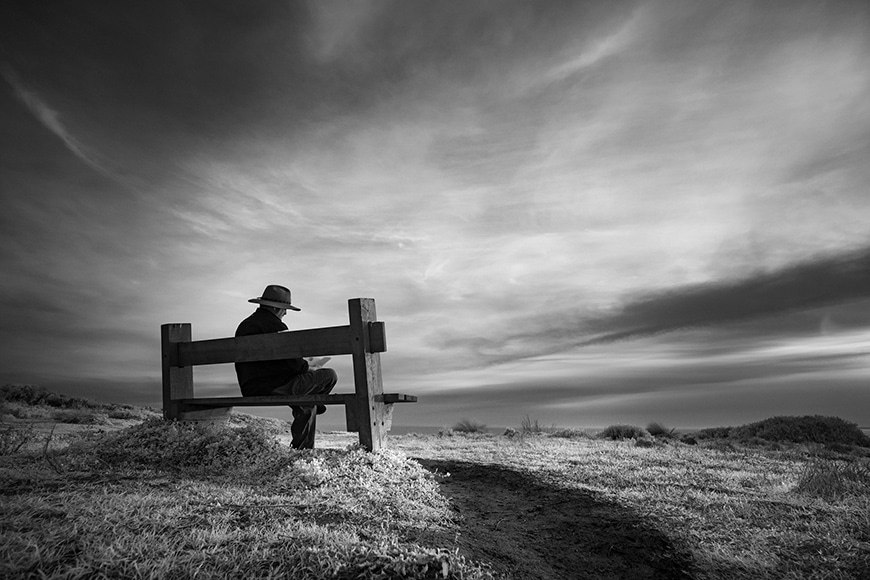
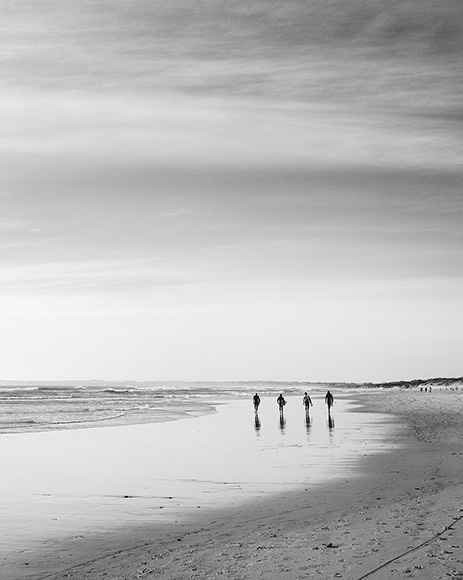
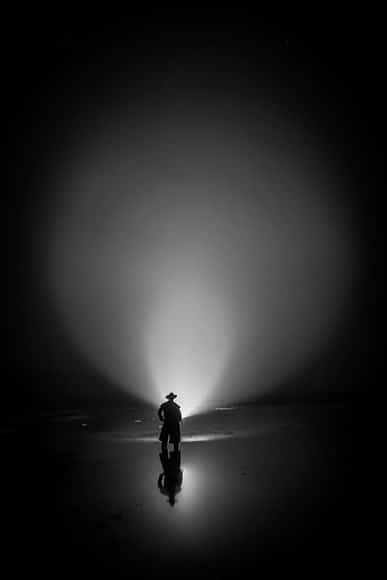
Dale Rogers
Landscape | Last Updated: December 17, 2021
I live in the land of OZ, a tornado’s throw from the hustle and bustle of urban life. On a little island home to Fairy Penguins, Koalas, Wallabies, Echidnas, Seals, Orca, Whales and Great White Sharks.
Phillip Island is a small island about two hours from Melbourne, Victoria, Australia. Access to this unique little island is via one small bridge from the mainland.
Life on the island is harsh. The Southern wind blows fierce and strong directly from Antarctica. The coastline is battered by big swells and pounding surf. The island is raised from the sea by ancient volcanic basalt and granite. Life struggles to survive in the sand dunes.
While nature is a harsh mistress on the island, she creates stunning scenery. I run Photo Rangers on Phillip Island, specialising in adventure-based photography workshops. I offer everything from basic camera skills to long exposure to astrophotography to landscape to wildlife and most everything in between.
I’ve been teaching people how to get the most from their cameras while appreciating this awesome and beautiful environment for over six years.
Although I live in this pristine and scenic environment, I love street photography. But, alas, there is limited opportunity for street photography here. Shooting people in small country towns brands you a weirdo or just strange, especially when you know most of those on the street.
I also love to shoot film. I find the aesthetic of film sublime and one that I can not recreate on digital even with post-process, filters and algorithms. To me, the process of shooting film is an exercise in mindfulness and contemplation.
Through the experience of shooting, developing, scanning and printing my own black and white film, I have learned to appreciate the interplay and relationship of shadows and highlights. Shooting in black and white removes the distraction of colour to leave the composition and tones to tell the story.
While walking the coastlines and bush tracks on the island I have developed my own brand of ‘street’ photography, capturing life’s tenuous hold and struggle to survive here. These are intimate landscapes. Shots that are typically passed by in the search for epic wide landscapes, waterfalls, rainbows and unicorns of today’s social media landscapes. They are candid shots of life’s struggle to survive.
Gear
Fujifilm XT3 – Way back in 2014 I bought my first mirrorless camera, a Fujifilm XT1. I wanted to see what mirrorless had to offer and I was drawn to the Fujifilm camera because it maintained a styling reminiscent of my favourite old film SLRs. Big knobs for shutter speed and ISO and a real aperture ring on the lenses coupled with an EVF and fairly realistic film simulations sucked me in.
Within a couple of months, I was leaving my full-frame Canon cameras and L series lenses at home and packing Fujifilm cameras. I’ve had many Fujifilm cameras, XT1, XT2, XT100, XT10, XPro2 and X100f. I wore out the XT1 and rusted out the weather-sealed XT2 (did I mention harsh conditions?).
I still love shooting with Fujifilm cameras like the XT3 and have really taken to customising the JPG film simulations to get unique looks.
The digital photos I have shared are mostly JPG shots with a customised film simulation to look similar to my favourite film, Kodak 400TX with a red filter. The XT3 is almost always paired with the Fujfilm 100-400mm f/4-6.5. This allows me to shoot wildlife as well as get some great intimate landscapes.
Fujifilm XPro2 – I picked up the XPro2 after falling in love with shooting film rangefinder cameras (see guide). The hybrid OVF/EVF viewfinder option along with the retro styling and customisable film simulations seemed like a match made in heaven to me. When out, I usually have the Fujifilm 10-24mm f/4 attached to the XPro2.
I like to adapt my old film lenses to the Fujfilm cameras and have a collection of over 100 lenses to choose from when I get that vintage feeling. The wallaby shot above was made with the XT3 and a Pentax Takumar 300mm f/4 m42 mount lens.
1956 Canon P – Without a doubt, this is my favourite camera. It’s a rangefinder that was engineered to perfection and built like a tank. It’s a beautiful camera to look at and even better to shoot. It does require careful contemplation and consideration before taking the shot.
The camera is manual focus only and it does not have a light meter. I have a small modern light meter made by DOMO in the camera flash shoe to make exposing a little easier. My favourite lens on this camera is the Canon 50mm f/1.2 m39 mount. This is a stellar old lens and I always have a Hoya #25a red filter attached to filter out blue light and give me dark broody skies.
Voigtlander Bessa R – Not as beautiful and tank-like as the Canon P, the Voigtlander Bessa R is a light weight smooth operator. It’s a dream to focus and shoot. It has a nice bright viewfinder and focusing patch making the camera quicker to compose and focus than the Canon P. Its shutter is music to my ears.
I love this camera with the Voigtlander Color Skopar 35mm f/2.5 or the Voigtlander Super-Wide Helliar 15mm f/4.5 lens.
F Stop Camera Bag – I’ve carried this bag for five years. It’s one of the first F Stop bags and I don’t think they make this one any longer. I like it because it’s smaller than my Shimodo 40L and makes me think carefully about the gear I’ll be taking with me. I usually hike from 2-11 kilometers in some pretty tough conditions and a strong lightweight bag is essential.
Film
In the shot, I’ve got a small leather container that holds two rolls of black and white 35mm film.
Stetson
At the top of the photo is my worn out Stetson. This hat has protected me from countless storms and sea spray over the years. It no longer has its traditional shape but gives me comfort in the elements every time I head out.
That’s all I tend to carry in that bag when out during the day. At night I would add a Samyang 12mm f/2.0 and a Samyang 8mm f/2.8 fisheye lens. I use Mefoto Tripods and typically carry the Globetrotter or the Roadtrip when a tripod is required. For long exposures, I use Athabasca ND Filters.
Probably my favourite digital camera to carry everywhere I go is a Fujifilm X100f. Its 23mm f/2.0 fixed lens gives me a small portable camera that can take an awesome shot in any condition. If I were stuck on the proverbial deserted island, this is the camera I would choose to have with me.
I didn’t include any 120 medium format cameras in my lay because I tend to carry those by themselves. I use a 1970 Mamiya c330 with 80mm f/2.8 TLR that is shaped like a cinderblock and feels like one too.
I also shoot with probably the sexiest camera ever made, the 1966 Zenza Bronica S2 with a razor sharp Nikkor 75mm f/2.8 and chrome fenders. No kidding, if this camera were a car it would be one of those shiny chrome 59 Cadillacs. Both shoot 120 film in a square 6×6 format.
For digital images, I edit with Adobe Lightroom Classic. I don’t spend much time editing. I try to get the image as close to perfect as possible as a JPG so that in many cases, I do not need to edit the RAW file and can just grab the JPG and go.
For film, I develop my own 35mm and 120mm film. I like to stand develop in Rodinal. This usually produces a fairly grainy but richly contrasted image. I scan the 35mm on a Plustec 8100 and the 120 on an Epson v550. Once scanned I import them into Lightroom and do a few quick edits, usually darkening the blacks.













